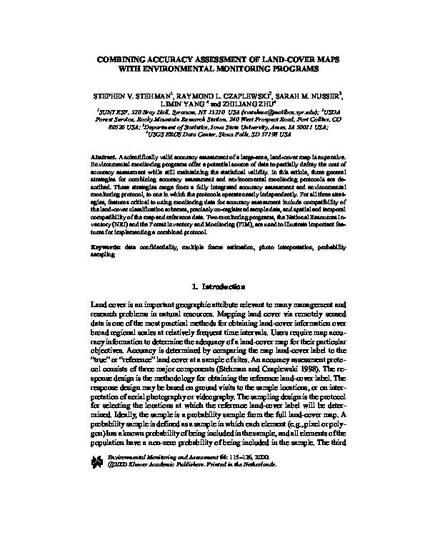
A scientifically valid accuracy assessment of a large-area, land-cover map is expensive. Environmental monitoring programs offer a potential source of data to partially defray the cost of accuracy assessment while still maintaining the statistical validity. In this article, three general strategies for combining accuracy assessment and environmental monitoring protocols are described. These strategies range from a fully integrated accuracy assessment and environmental monitoring protocol, to one in which the protocols operate nearly independently. For all three strategies, features critical to using monitoring data for accuracy assessment include compatibility of the land-cover classification schemes, precisely co-registered sample data, and spatial and temporal compatibility of the map and reference data. Two monitoring programs, the National Resources Inventory (NRI) and the Forest Inventory and Monitoring (FIM), are used to illustrate important features for implementing a combined protocol.
Available at: http://works.bepress.com/sarah_nusser/5/

This article is from Environmental Monitoring and Assessment 64 (2000): 115–126, doi:10.1023/A:1006487829238.